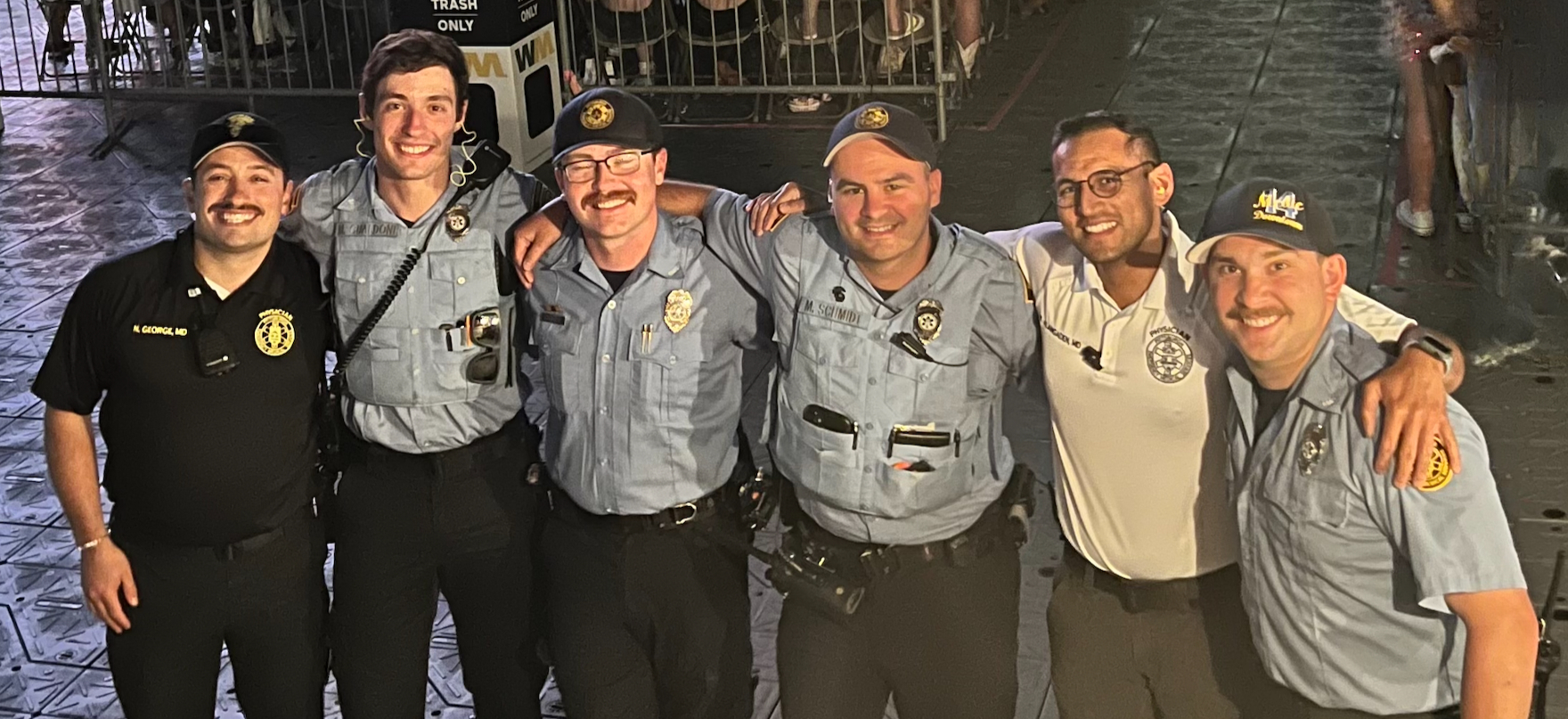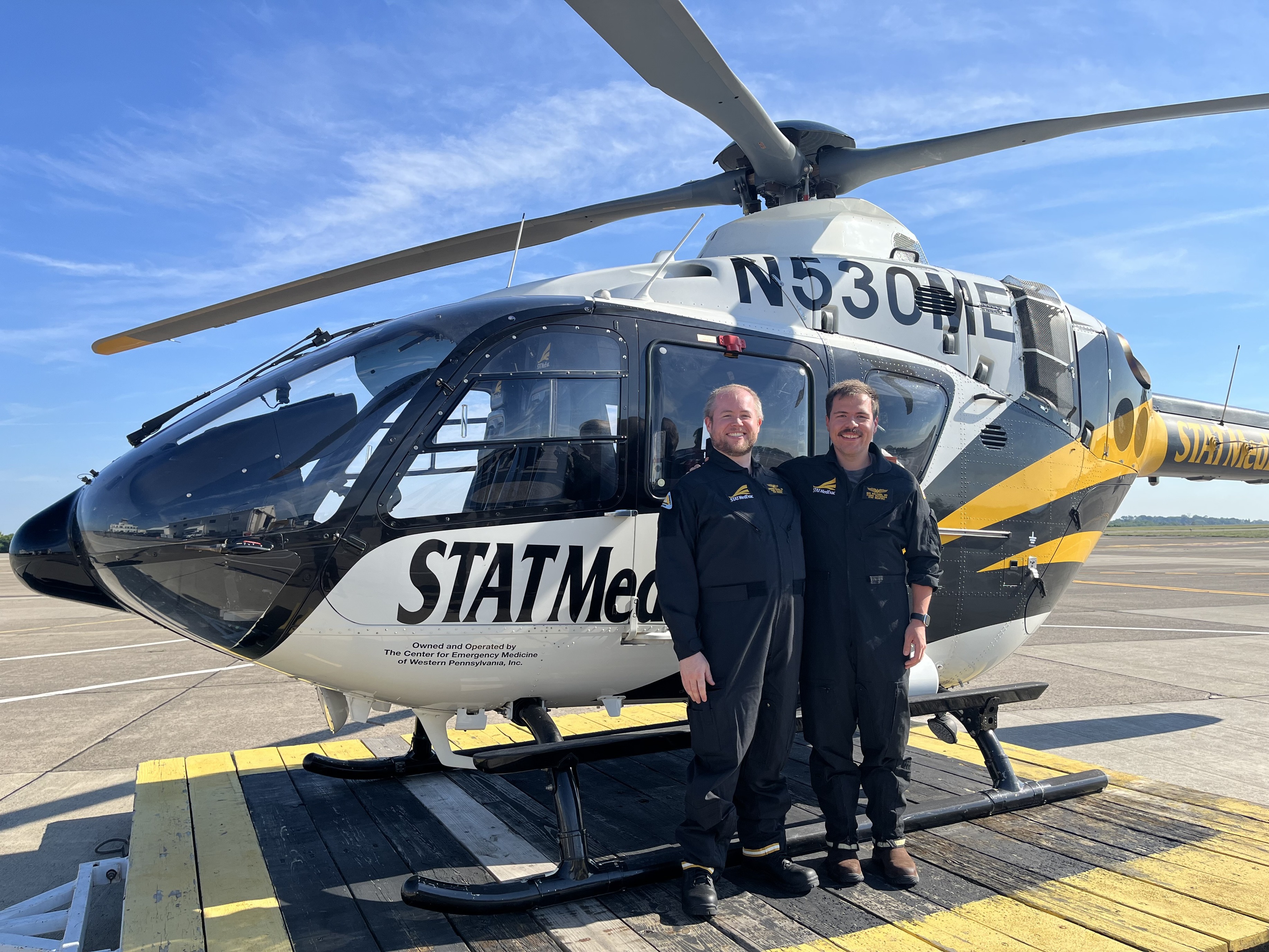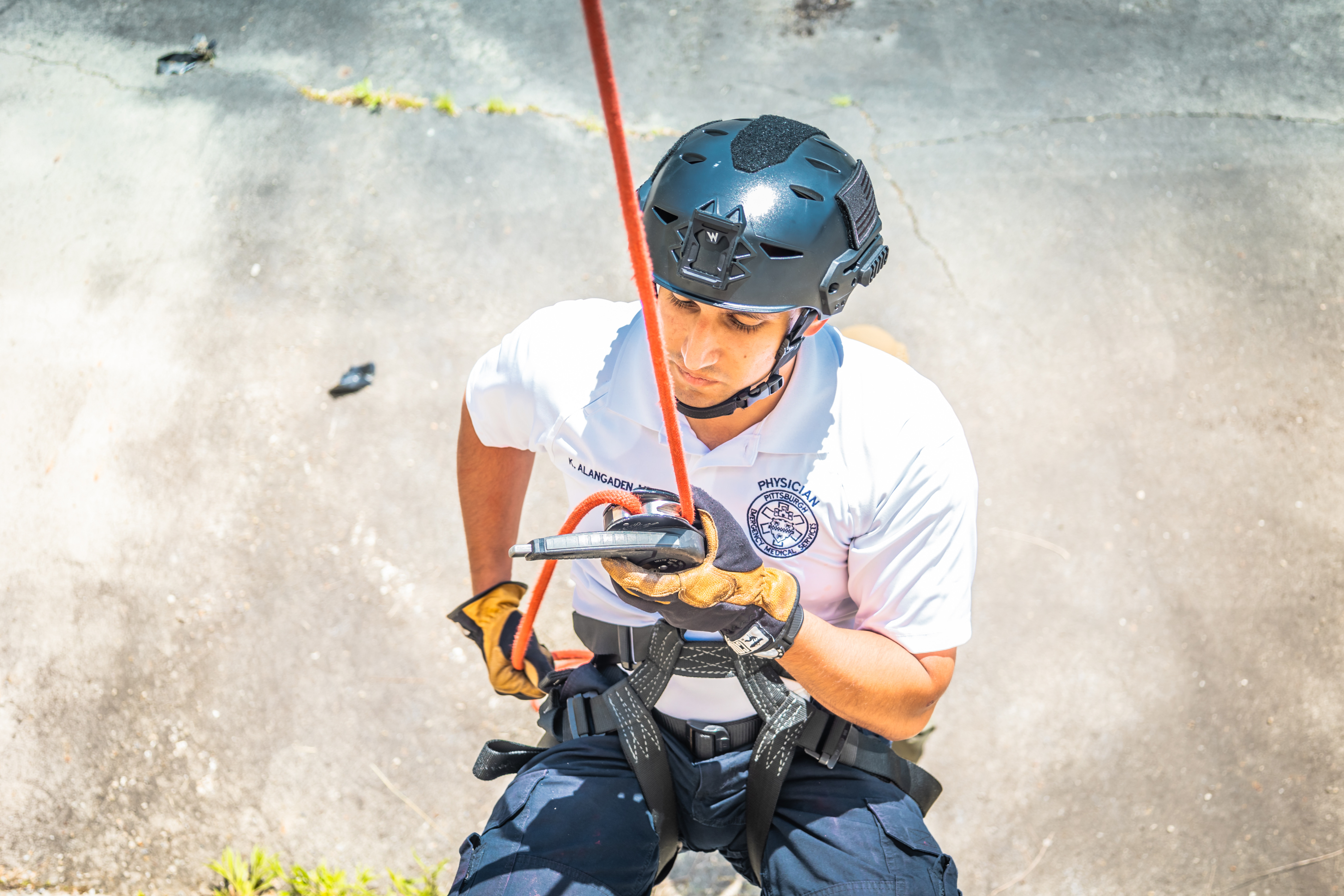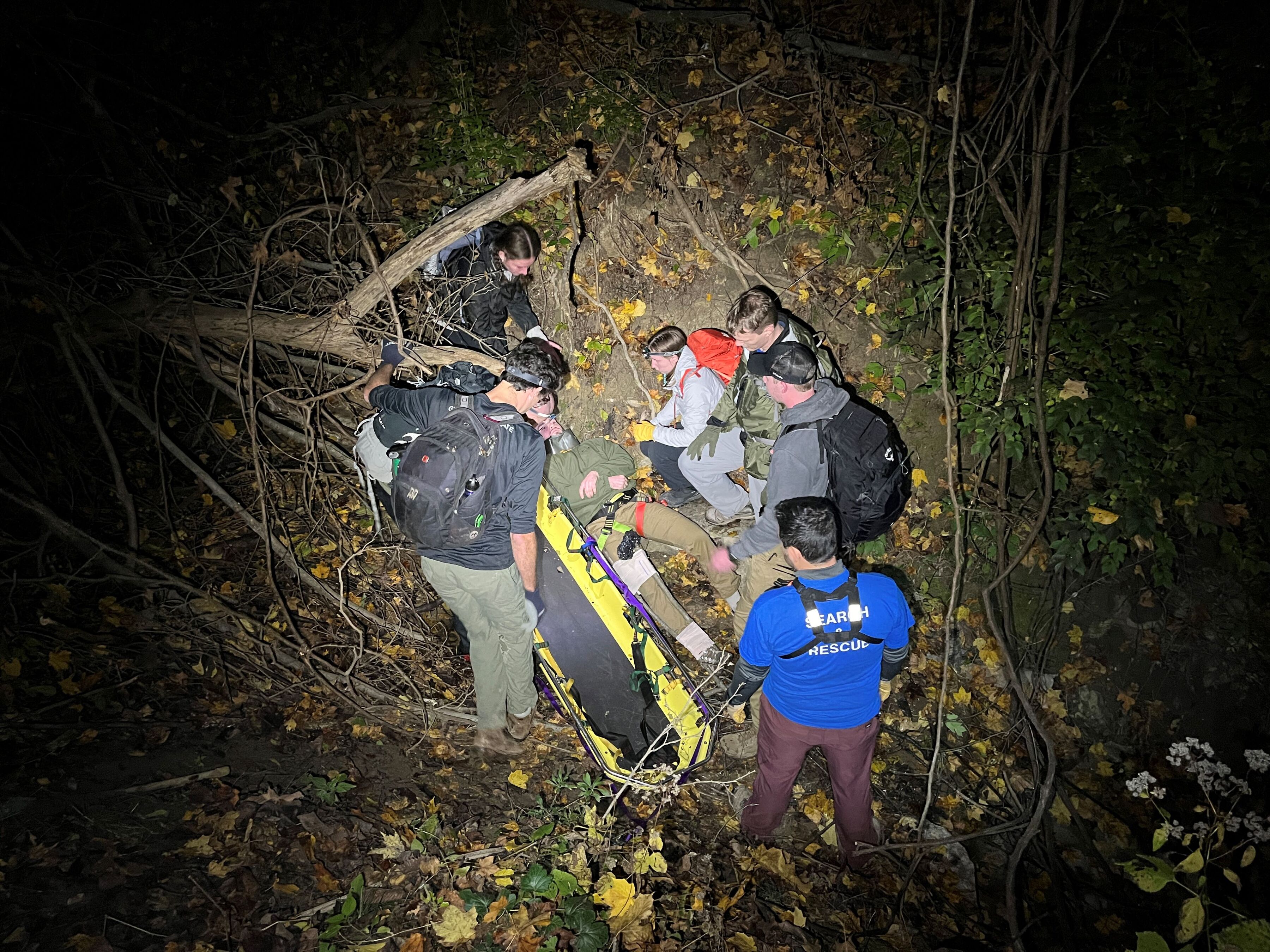City of Pittsburgh Department of Public Safety

The City of Pittsburgh Department of Public Safety includes the Bureaus of EMS, Fire, and Police. The City’s Bureau of EMS is an urban municipal third-service EMS agency that responds to 60,000 calls for assistance per year. It provides Basic and Advanced Life Support, Vehicle Rescue, Technical Rescue, River Rescue, hazardous materials response, and medical coverage for mass gathering events. The Bureau of Fire provides first responder services, and the combined bureaus provide medical support for police (SWAT) and hazardous materials teams.
The EMS Fellow functions as an Assistant Medical Director and participates in the medical direction of 170 paramedics and 24 EMTs that form the Bureau of EMS. Additionally, the EMS Fellow has the opportunity to staff a response vehicle along with Emergency Medicine residents, who provide 24/7 prehospital physician coverage and online medical command for the City of Pittsburgh. Additional access to a secondary physician vehicle is available for response to large medical events, such as multiple alarm fires and multi-casualty incidents.
UPMC Prehospital Care
UPMC Prehospital Care provides medical direction for over 42 ALS and 50 BLS/QRS suburban and rural ground EMS agencies in the Pittsburgh metropolitan region, each with a primary EMS Medical Director. EMS Fellows have opportunities to serve as a Medical Director or Associate Medical Director for one or more EMS agencies. System-wide quality improvement, education, and medical direction are overseen by two medical directors who are EMS Fellowship faculty and provide opportunities for EMS Fellows to participate in these activities, including experience in suburban, rural, private, and volunteer EMS systems. A solid support infrastructure is provided by the UPMC Prehospital Care team comprised of experienced paramedics and prehospital nurses who serve as EMS Specialists assigned to each EMS agency and UPMC facility. The EMS Specialists liaison with EMS agency leadership and workforce, while coordinating support resources available throughout the UPMC hospital network, all in concert with the medical directors. A unique teaching and treatment resource available through UPMC Prehospital Care is the Simulation and Medical Resource Training (SMART) Unit, a multi-purpose mobile unit that includes two fully equipped emergency treatment rooms and a triage and control area, along with audiovisual equipment that makes it suitable for provision of mass gathering medical care as well as on-site training for EMS agencies.
STAT MedEvac Critical Care Transport Service
STAT MedEvac is the region’s largest air and ground critical care transport program and staffs 18 rotor wing and two ground critical care transport bases located in Pennsylvania, Ohio, Maryland, New York, and Washington, DC. It also provides national and international fixed wing transports. STAT MedEvac completes over 13,000 missions per year, including scene runs and critical care inter-facility transports. Flight crews are primarily composed of a flight nurse and flight paramedic team but also include flight nurse/physician and flight paramedic/physician teams. A robust quality assessment and improvement program is overseen by a large Medical Department, including four Medical Directors, who are all graduates of the UPMC EMS Fellowship. Two clinical directors, seven regional medical managers, an education manager, and education and quality improvement coordinators round out a collaborative Medical Department that allows STAT MedEvac to be one of the leading critical care transport services in the world.

STAT MedEvac has a long history of leading the field of air medical and critical care transport research. Our team has led or participated in trials for the Resuscitation Outcomes Consortium (National Institutes of Health) and the Linking Investigations in Trauma and Emergency Services (LITES) research network (Department of Defense). In addition, we have conducted numerous trials, recruiting thousands of patients, resulting in changes in practice. STAT MedEvac has pioneered point of care testing, video laryngoscopy, prehospital plasma, whole blood and machine learning. Our team also translates quality improvement initiatives into generalizable knowledge. This has resulted in processes for reducing door to balloon times in STEMI, reducing end organ injury in STEMI through remote ischemic conditioning, and field activation of angiography for stroke. STAT MedEvac has also described novel practices such as real-time fatigue assessments through SMS messaging and transport of patients receiving mechanical ventilation while prone. We have been able to execute this research program through unparalleled collaboration with UPMC and the University of Pittsburgh.
EMS Fellows at UPMC routinely take part as 2nd crew members on aircraft as Flight Physicians. EMS Fellows actively participate as members of the Medical Department and gain experience in the administration and medical direction of a large and busy air medical service.
UPMC Medical Communications Center
At the UPMC Medical Communications Center, physicians from the Department of Emergency Medicine, including EMS Fellows, provide a wide range of out-of-hospital medical command, telemedicine, and consultation services. Online medical command is provided to ground EMS agencies throughout the Pittsburgh metropolitan region and surrounding counties. The Command Physician provides medical consultations for all 18 STAT MedEvac air medical bases and its ground critical care transport team. Additionally, over 15,000 yearly medical consultations for 15 U.S. and international airlines are provided. These consultations are primarily comprised of in-flight medical emergencies for domestic and international flights. In total, UPMC emergency physicians provide over 30,000 medical consultations annually.
Tactical EMS
 The City of Pittsburgh Bureau of EMS and University of Pittsburgh have active Tactical EMS programs. The Pittsburgh TEMS program comprises of paramedics from the Bureau of EMS who work with the Bureau of Police SWAT as part of specialized teams deployed during special incidents. Medical direction of these programs is provided by a faculty member within our EMS Division. EMS Fellows gain experience in tactical medicine through structured didactics and involvement in the continuing education of Tactical EMS personnel. EMS Fellows with an interest in tactical medicine can take an active role in medical direction of the Tactical EMS program. Fellows can obtain additional training in tactical medicine and can then take call for field response in these situations.
The City of Pittsburgh Bureau of EMS and University of Pittsburgh have active Tactical EMS programs. The Pittsburgh TEMS program comprises of paramedics from the Bureau of EMS who work with the Bureau of Police SWAT as part of specialized teams deployed during special incidents. Medical direction of these programs is provided by a faculty member within our EMS Division. EMS Fellows gain experience in tactical medicine through structured didactics and involvement in the continuing education of Tactical EMS personnel. EMS Fellows with an interest in tactical medicine can take an active role in medical direction of the Tactical EMS program. Fellows can obtain additional training in tactical medicine and can then take call for field response in these situations.
Wilderness EMS / Search and Rescue / Disaster Medicine

EMS Fellows participate in didactic and in-field activities with multiple search and rescue teams and EMS faculty that specialize in Wilderness EMS. Training spans a basic understanding of Wilderness EMS operations supplemented by enhanced opportunities to participate in rescue teams. UPMC EMS faculty provide oversight to the Appalachian Search and Rescue team. EMS Fellows also participate in mass casualty simulations with our hospitals and EMS systems. They also play an integral role in management and on-scene medical direction for mass casualty events when they occur.